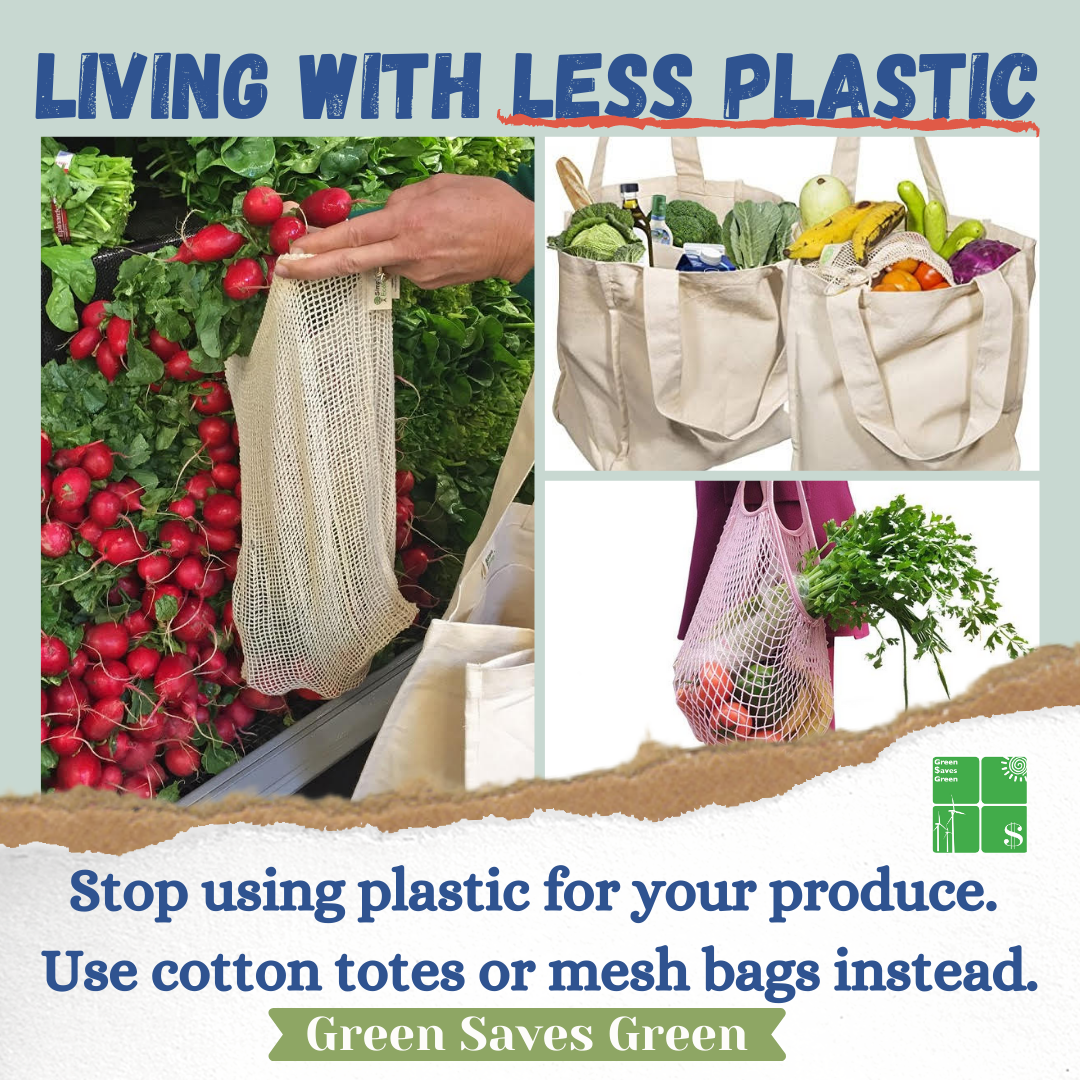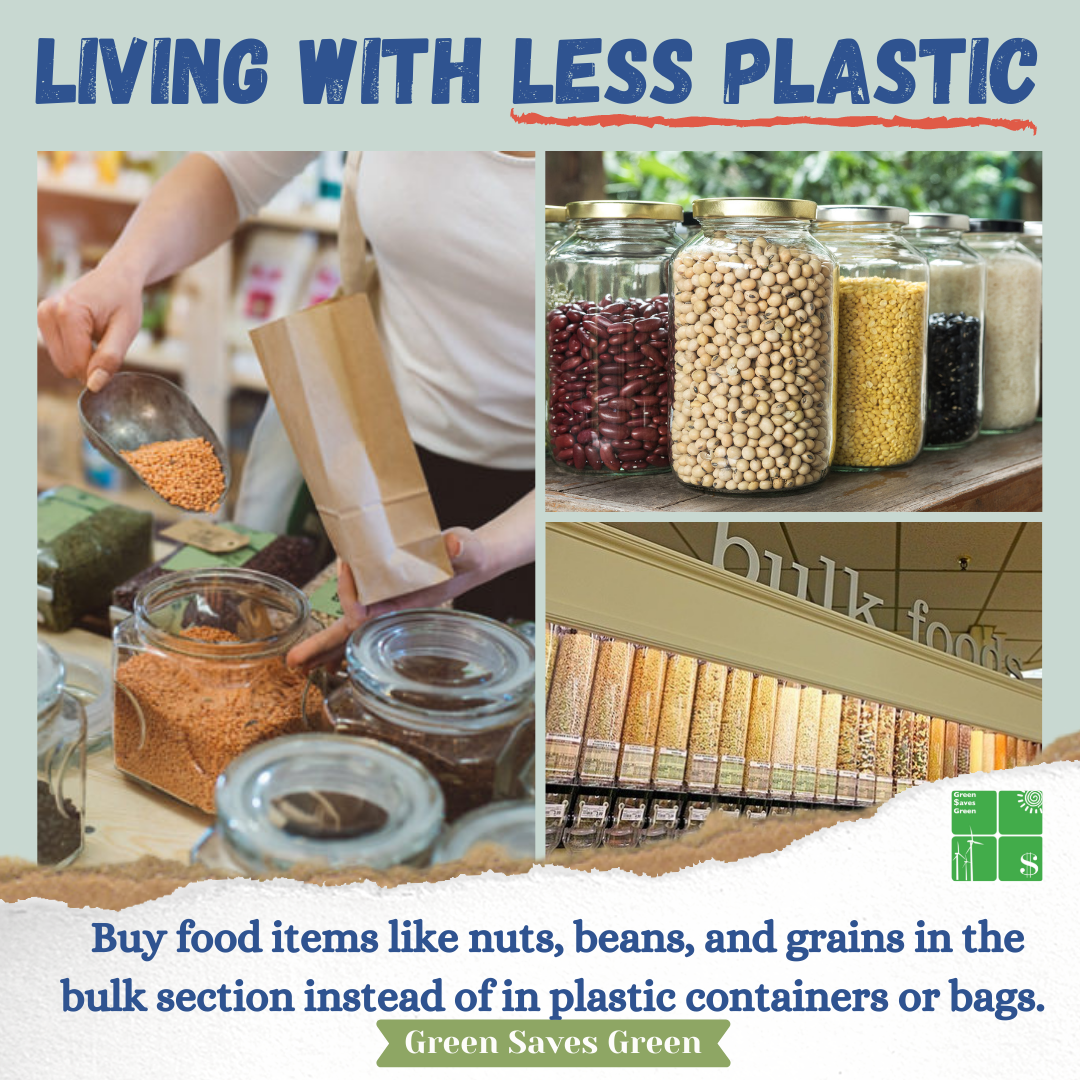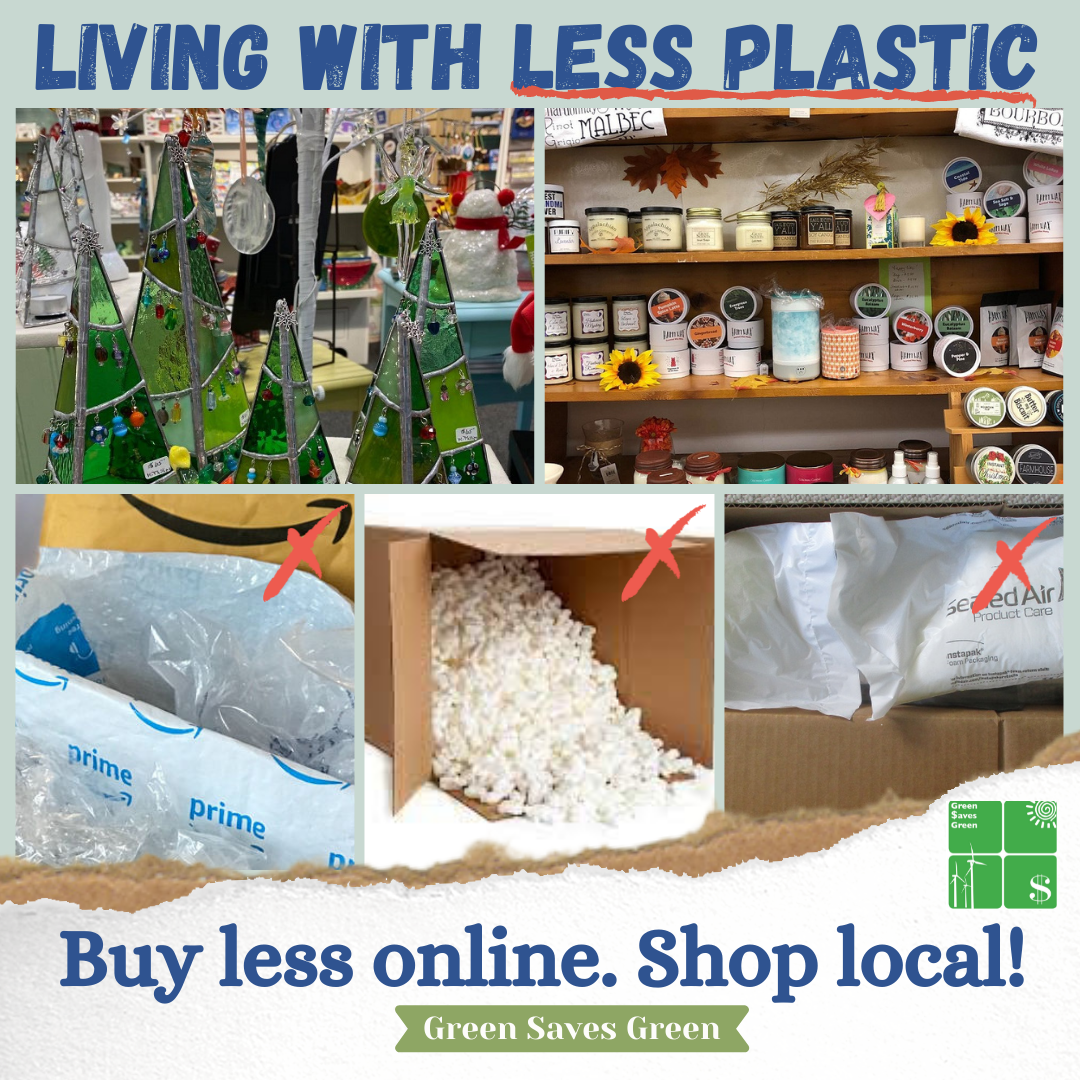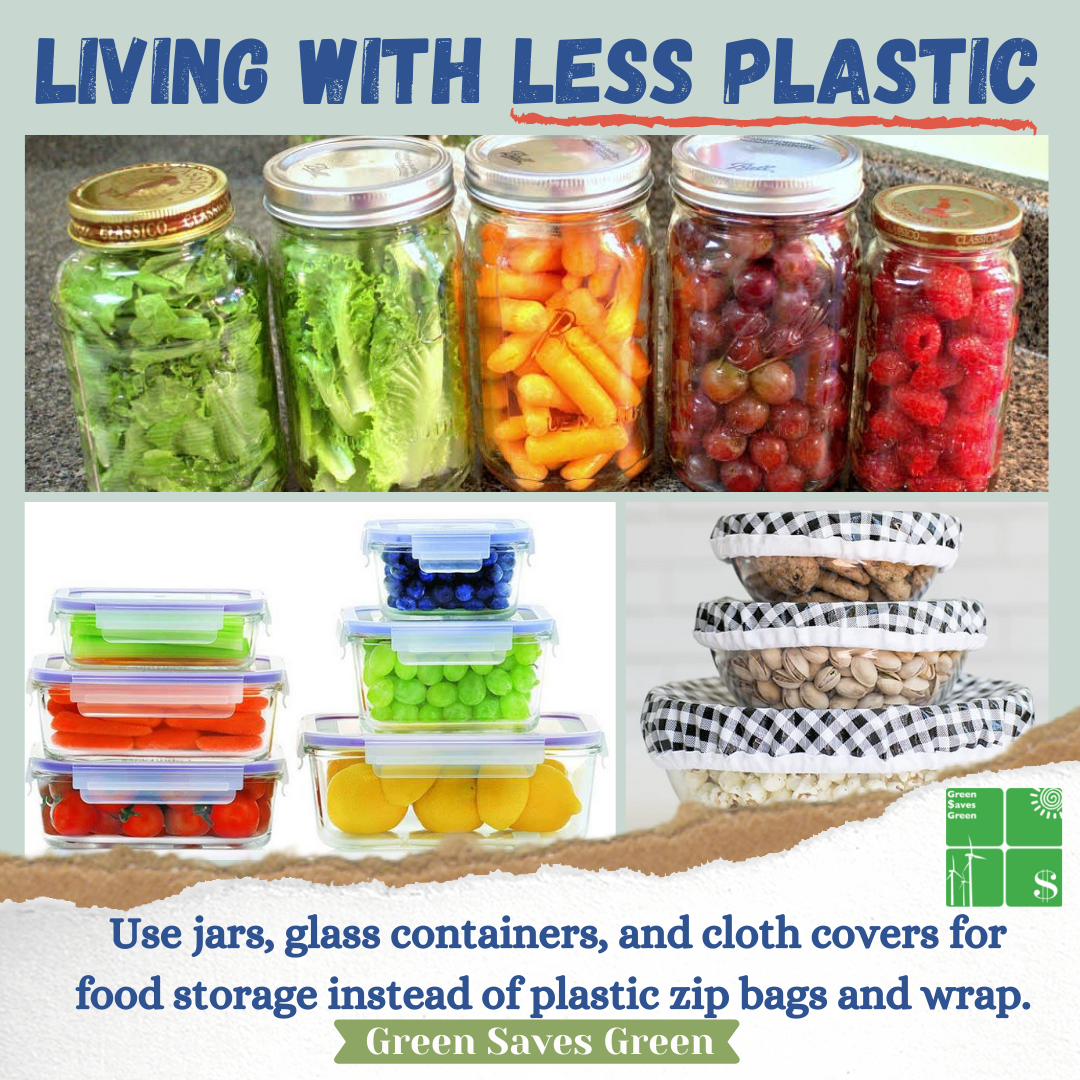
Living with Less Plastic
We are drowning in plastic waste
More than 98% of plastics are made from fossil fuels. The process involves the addition of numerous petrochemical additives, some of which are highly toxic. Only 5-8% of plastic is recycled. The rest is incinerated, put in landfills, or littered. Nearly half of all plastics manufactured today are single use items and packaging.
The problem with plastics
They never go away. They don’t biodegrade. They break up into smaller and smaller pieces known as micro- and nanoplastics, which are so small they are in the air we breathe, the water we drink, and the food we eat. These pieces are present almost everywhere researchers have looked, including inside the human body. Scientists have detected plastic particles in human lung tissue, intestinal tissue, blood, breast milk, the muscle of the heart, and inside fetuses and newborn babies.
What are the solutions?
Real solutions to the plastic waste problem include promoting reduction in plastic production, zero waste systems, switching from single-use to reuse, and strengthening public policies. Legislation that reduces the production of these items and mandates extended producer responsibility will go a long way toward relieving pollution, animal death, and human health risks.
What you can do
Start with yourself, your home, and your family. Change your habits. Carry reusable shopping bags in your car so they are handy whenever you stop to shop. Avoid buying fresh produce sold in plastic containers. By it loose instead. Switch from plastic wrap to reusable wax wrap. Bring a clean container with you when you dine out to take home any leftovers. Recycle plastics where available.
Here are more tips for reducing your plastic use.






